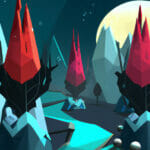Welcome to this comprehensive tutorial on Roblox avatar customization scripting. As we step into the fascinating world of game development, one of the core aspects that enhances user experience is avatar customization. By empowering users to make their in-game personas reflect their personality or style, we can create a more engaging, personalized gaming environment.
Table of contents
What Is Roblox Avatar Customization Scripting?
Roblox, the wildly popular online platform, enables players to design, create, and interact in immersive 3D worlds. Avatar customization scripting is a key aspect of this, allowing developers to incorporate functionality within their games that gives players the ability to modify and customize their avatars.
What Is It Used For?
Avatar customization scripting offers endless possibilities for game developers. Whether it’s designing unique outfits, changing hair styles, or even modifying physical attributes, this feature creates an engaging platform where players can truly express themselves. Plus, it’s a great way to add an additional layer of user engagement and monetization options via in-game purchases.
Why Learn Roblox Avatar Customization Scripting?
Roblox’s massive player base makes it an excellent platform to sharpen your game development skills. Plus, understanding avatar customization scripting opens up new possibilities for user engagement and revenue generation in your games. Whether you’re a hobbyist developer or taking your first steps towards a professional career, mastering scripting in Roblox provides crucial, practical experience.
Setting Up The Environment
Before we delve into the scripting, we need to set up our Roblox Studio environment. Here, we will lay the groundwork needed for our Roblox avatar customization. Follow the steps below:
- Open Roblox Studio and create a new project.
- Select the ‘Model’ tab and click ‘PrimaryPart’.
- Click on ‘Part’ and select your preferred avatar model (either R6 or R15) from the ‘Rig’ section.
Importing an Avatar
Once the environment is set, we need to import a default avatar for customization. This will serve as a base model for our users to modify. Here’s how to import an avatar:
local assetId = 'rbxassetid://4634947471' -- The Roblox Asset ID for your avatar
local function loadAvatar()
local humanoidDescription = Instance.new('HumanoidDescription')
humanoidDescription:ApplyDescription(Instances.Workspace.Player.Humanoid)
end
loadAvatar()Avatar Part Customization
With the avatar in place, you can now begin modifications. Let’s start by changing different parts of our avatar. We’ll modify the BodyColors of the avatar:
local function customizeBodyParts()
local bodyColors = Instance.new('BodyColors')
-- Changing body parts colors
bodyColors.HeadColor = BrickColor.new('Bright red')
bodyColors.TorsoColor = BrickColor.new('Bright blue')
bodyColors.LeftArmColor = BrickColor.new('Bright yellow')
bodyColors.RightArmColor = BrickColor.new('Bright green')
bodyColors.LeftLegColor = BrickColor.new('Bright violet')
bodyColors.RightLegColor = BrickColor.new('Bright orange')
bodyColors.Parent = game.Workspace.Player
end
customizeBodyParts()Here, we are introducing RGB values to modify colors for different parts of the body. This will give us an avatar with distinct-coloured limbs and head.
Adding Clothing
Now let’s take it a step further by adding clothing to our avatar. Clothing in Roblox comes in the form of three types: Shirts, T-Shirts, and Pants. In our case, we will add a Shirt and Pants to our avatar:
local function customizeClothing()
local shirt = Instance.new('Shirt', game.Workspace.Player)
shirt.ShirtTemplate = 'rbxassetid://154827980'
local pants = Instance.new('Pants', game.Workspace.Player)
pants.PantsTemplate = 'rbxassetid://154827990'
end
customizeClothing()Remember, every piece of clothing in Roblox is identified with a unique ‘rbxasset ID’, which needs to be referenced when adding clothing elements.
Customizing Face and Accessories
Moving on, we can also change the face of our avatar. In Roblox, faces are controlled using Decals. Here’s how to customize the face:
local function customizeFace()
local face = Instance.new('Decal', game.Workspace.Player.Head)
face.Texture = 'rbxassetid://4634947471'
face.Face = 'Front'
end
customizeFace()We can enrich the appearance of our avatar by adding accessories such as hats, glasses, wings, etc. Let’s add a hat to our avatar:
local function addHat()
local hat = Instance.new('Hat', game.Workspace.Player)
hat.Name = 'Cowboy Hat'
hat.PantsTemplate = 'rbxassetid://4634949441'
end
addHat()Handling Avatar Movement
In addition to appearance, avatar customization also involves movement control. Here’s an example of how to script movements:
local function moveAvatar(X, Y, Z)
game.Workspace.Player.Humanoid.WalkToPoint = Vector3.new(X, Y, Z)
end
moveAvatar(10, 0, 0)This simple function can be used to move the avatar to a specific point (X, Y, Z) in the 3D space.
Scaling Your Avatar
From changing the avatar’s size to proportioning the body parts, we can define these specifications using the ‘BodyScale’ object. Here’s how we can do this:
local function scaleAvatar()
local bodyScale = Instance.new('BodyScale', game.Workspace.Player)
-- Set the scale values
bodyScale.HeightScale = 1.2
bodyScale.WidthScale = 1.1
bodyScale.HeadScale = 1.3
bodyScale.DepthScale = 1.0
end
scaleAvatar()This will make the avatar taller, broader, and the head larger, to give a stylized appearance to the character.
Animating Your Avatar
Bringing your avatar to life would involve adding animations. We can assign animations to specific gestures or actions of the avatar as follows:
local function animateAvatar()
local animation = Instance.new('Animation')
animation.AnimationId = 'rbxassetid://204630146'
-- Apply animation to a specific gesture
game.Workspace.Player.Humanoid:LoadAnimation(animation):Play()
end
animateAvatar()Here, the ‘LoadAnimation’ function loads the animation and ‘Play’ executes it. This will bring an extra layer of dynamic life to your avatar, making the gaming experience more engaging.
Scripting Character Movements
Up until now, we have been refining character appearance. Now let’s dive into scripting movements – a vital part of any game.
local function runAvatar()
local humanoid = game.Workspace.Player.Humanoid
humanoid.WalkSpeed = 16
humanoid.JumpPower = 50
end
runAvatar()This script increases the avatar’s walking speed and jump height, making your character more energetic and agile.
Character Morphing
Another impressive feature in Roblox is morphing – the ability to transform the player’s avatar into different shapes or forms. This can prove to be very engaging in countless gameplay scenarios.
local function morphAvatar()
local character = game.Workspace.Player.Character
character.Head.Mesh:remove() -- Remove the head first
-- Add new head
local newHead = Instance.new('Part', character)
newHead.Name = 'MorphedHead'
newHead.BrickColor = BrickColor.Random()
newHead.FormFactor = 'Custom'
newHead.Size = Vector3.new(1,1,1)
newHead.TopSurface = 'Smooth'
newHead.BottomSurface = 'Smooth'
newHead.Parent = character
end
morphAvatar()This script changes the character’s head to a square block with random colors.
Implementing Emotes
One of the aspects that makes gaming more immersive and interactive is the ability for the avatars to express emotions – usually in form of predefined emotes or actions.
local function emoteAvatar()
local humanoid = game.Workspace.Player.Humanoid
humanoid:EquipTool('rbxassetid://2514897942') -- Equip the joyous emote
end
emoteAvatar()This function allows our character to perform a joyous emote, adding more character to your avatar.
Chaining Expressions
Lastly, let’s create a chain of expressions that our avatar can execute in sequence. This makes for more complex and meaningful interactions.
local function chainExpressions()
local humanoid = game.Workspace.Player.Humanoid
humanoid:EquipTool('rbxassetid://2514897942') -- Equip joyous emote
wait(2)
humanoid:EquipTool('rbxassetid://4671908305') -- Equip saluting emote
wait(2)
humanoid:EquipTool('rbxassetid://2506281703') -- Equip clapping emote
end
chainExpressions()This script executes a chain of emotes – joyous, salutation, then clapping. Using wait(), we can control the delay between the emotes.
Conclusion
There you have it! A rich set of customization, modification, and animation tools for your Roblox avatar. Every game’s charm lies in keeping the players engaged, and avatar customization plays a monumental role in achieving that. With this knowledge, you’re one step ahead in creating an engaging gaming environment.
Remember, the ultimate goal is to have fun and let your creative juices flow. Happy coding!
Hopefully, you now have a stronger grasp of how avatar customization can enhance the user experience in your Roblox games, and are pumped to dive deeper into the vast world of game development. The journey, however, does not end here. In fact, it’s only just begun! If you’re curious to learn more and upskill your knowledge, then continue onward.
At Zenva, we offer a robust Roblox Game Development Mini-Degree program. Our Mini-Degree offers a comprehensive collection of online courses designed to help you create a variety of games using Roblox Studio and Lua across various genres, including obstacle courses, melee combat games, and first-person shooters. Furthermore, our courses cater to both novice and experienced developers and are delivered through stimulating, hands-on lessons, coding challenges, and interactive quizzes. And the best part? All of our courses can be accessed anytime and anywhere, so you can learn at your own pace.
Learning game development not only provides an avenue to express your creativity but can also lead to opportunities in a multi-billion-dollar industry. For a broader collection, feel free to check out our complete range of Roblox Courses. We promise you one thing: once you start exploring, there’s no turning back. So, ignite your coding prowess and embark on this enriching journey of game development with us at Zenva today!
Conclusion
And there you have it, folks! You’ve just taken a hands-on tour of avatar customization on Roblox, an essential aspect of Roblox game development. As you can see, giving players the power to personalize their avatars can make your game worlds more dynamic and appealing. Plus, it’s a fun way to learn and sharpen your coding skills.
However, the road to mastery in game development goes beyond this tutorial. It calls for consistent learning, practice, and exploration. That’s where Zenva comes in. Our Roblox Game Development Mini-Degree program can help amplify your knowledge and skills, preparing you for a thriving career in game development. So, are you ready to take your learning to the next level? Join us at Zenva, and let’s rock the world of game development together!
Did you come across any errors in this tutorial? Please let us know by completing this form and we’ll look into it!

FINAL DAYS: Unlock coding courses in Unity, Godot, Unreal, Python and more.






